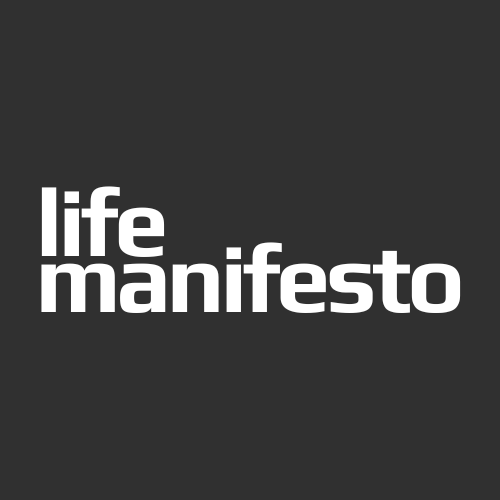In the world of productivity, the landscape can be overwhelming, with countless tools, strategies, and methods vying for your attention. However, to cut through the clutter and truly get things done, it’s essential to focus on the fundamentals: the four key pillars that support a productive lifestyle. These pillars are Task Management, Calendar, Communication, and Second Brain—each playing a critical role in keeping you organized, focused, and efficient.
Here’s a breakdown of each pillar and how you can leverage them to build a solid productivity system.
1. Task Management: Your Mission Control
A dependable task manager is the foundation of productivity. It’s your personal command center, where you capture, organize, and prioritize everything you need to do. For this, I use Todoist, a simple yet powerful task manager that’s available in a freemium version—meaning you can get started for free, with the option to unlock more features if needed. Download Todoist here.
Why It Matters
Effective task management helps you keep track of every commitment, from minor tasks to major projects. It provides clarity, letting you know exactly what needs to be done, and helps you break down larger goals into manageable steps.
Key Components of a Good Task Management System
• Capture: Use a reliable tool to capture all your tasks as they come to mind. Todoist makes it easy to quickly jot down to-dos, add due dates, and categorize by project.
• Prioritize: Not everything is equally important. Organize tasks by urgency and importance using Todoist’s priority levels.
• Plan: Break projects into smaller steps and assign deadlines. Consider using recurring tasks for activities that happen regularly.
• Review: Regularly check your task list, update it, and celebrate completed tasks. A weekly review helps to reset and plan for the upcoming week.
Pro Tips
• Use labels or tags in Todoist to categorize tasks by context (like “Work” or “Personal”).
• Try time management techniques like Time Blocking with your task list for better focus.
• Integrate Todoist with your calendar to keep everything synchronized.
2. Calendar: Your Time Compass
If tasks are about what you need to do, the calendar is about when you’ll do it. It’s your essential time management tool, guiding you through your commitments and helping you allocate time for deep work, meetings, and relaxation. Most people use Google Calendar but I personally rely on the Notion Calendar, a free and customizable calendar tool integrated into Notion (and it is also connected to Google Calendar). You can explore it here.
Why It Matters
A calendar isn’t just about scheduling—it’s about visualizing your time, making sure you can realistically fit everything into your week without burning out.
Key Components of a Good Calendar System
• Time Blocking: Allocate specific time blocks for deep work, meetings, leisure, and self-care.
• Recurring Events: Set up regular reminders for weekly activities, like your workout or review session.
• Buffer Time: Schedule gaps between tasks and meetings to allow for transitions and unexpected events.
• Color Coding: Use colors to differentiate between work, personal commitments, and social events, giving you a clearer overview at a glance.
Pro Tips
• Leave open space in your calendar to accommodate unexpected tasks.
• Use a digital calendar that syncs across devices, like Google Calendar or Notion Calendar, for easy access.
• Implement Timeboxing, dedicating specific time slots to particular tasks and sticking to them for better focus.
3. Communication: Managing the Inflow and Outflow
Communication tools—email, chat, messaging apps—are essential for collaboration but can easily become overwhelming if not properly managed. This pillar is all about finding the right balance between staying connected and maintaining your focus.
Why It Matters
Effective communication keeps you in the loop without drowning you in endless interruptions. Managing communication well allows you to keep important conversations on track, whether it’s work-related emails, quick Slack messages, or project discussions.
Key Components of Good Communication Management
• Inbox Zero: Aim to clear your email inbox regularly. Archive, delete, or sort emails as soon as you receive them.
• Filter and Prioritize: Use filters to categorize emails. Flag important messages and create folders like “To Do,” “To Read,” or “Waiting On.”
• Batch Processing: Set aside specific times each day to check and respond to emails, instead of doing it continuously.
• Use the Right Tool for the Job: Choose communication tools wisely—email for formal communication, Slack or Microsoft Teams for internal messaging, and platforms like Asana or Notion for collaborative project updates.
Pro Tips
• Keep your emails brief. Use clear subject lines and bullet points for clarity.
• Turn off notifications during deep work to avoid distractions.
• Unsubscribe from unnecessary newsletters and use email rules to automatically categorize incoming messages.
4. Second Brain: Externalize Your Knowledge
A “Second Brain” is your personal knowledge management system—a digital repository for everything you need to remember or reference. This allows you to free up mental space and focus on creating, knowing that your information is safely stored and easily accessible. My go-to tool for this is Notion, which is not only powerful but also free to use. Explore Notion here.
Why It Matters
We live in an age of information overload. A Second Brain captures all that knowledge—ideas, notes, research, documents—so you don’t have to keep it all in your head. It allows you to think more clearly and retrieve information with ease, whether you’re brainstorming new ideas or recalling key details from a project.
Key Components of a Good Second Brain System
• Capture: Use a note-taking app like Notion to store all ideas, meeting notes, web clippings, and research.
• Organize: Create a structure that makes sense to you. Use Notion’s folders, pages, and tags to categorize information by topic, project, or priority.
• Link and Contextualize: Connect related notes using Notion’s hyperlinks to create a network of interconnected ideas.
• Review and Refine: Regularly go through your notes to update, delete, or consolidate information. Keep your Second Brain streamlined for easy access.
Pro Tips
• Consider using a system like PARA (Projects, Areas, Resources, Archives) to categorize your notes in Notion. PARA system was introduced by Tiago Forte. You can find more info here.
• Avoid hoarding unnecessary information—save what’s genuinely useful or inspirational.
• Use bi-directional linking (available in Notion) to relate notes and create a web of interconnected ideas.
Integrating the Four Pillars for a Holistic System
These four pillars work best when integrated into a cohesive productivity system:
• Task Manager (Todoist) captures everything you need to do.
• Calendar (Google Calendar and Notion Calendar) tells you when you’ll do it.
• Communication tools ensure that you stay connected and collaborative without distractions.
• Second Brain (Notion) stores all the information and insights you need to get things done.
Mastering these pillars requires some experimentation and adjustment, but once you have them set up, you’ll have a solid foundation to manage your time, projects, and life efficiently. Remember, productivity is not about squeezing more tasks into your day—it’s about freeing up your time and energy for what truly matters.





